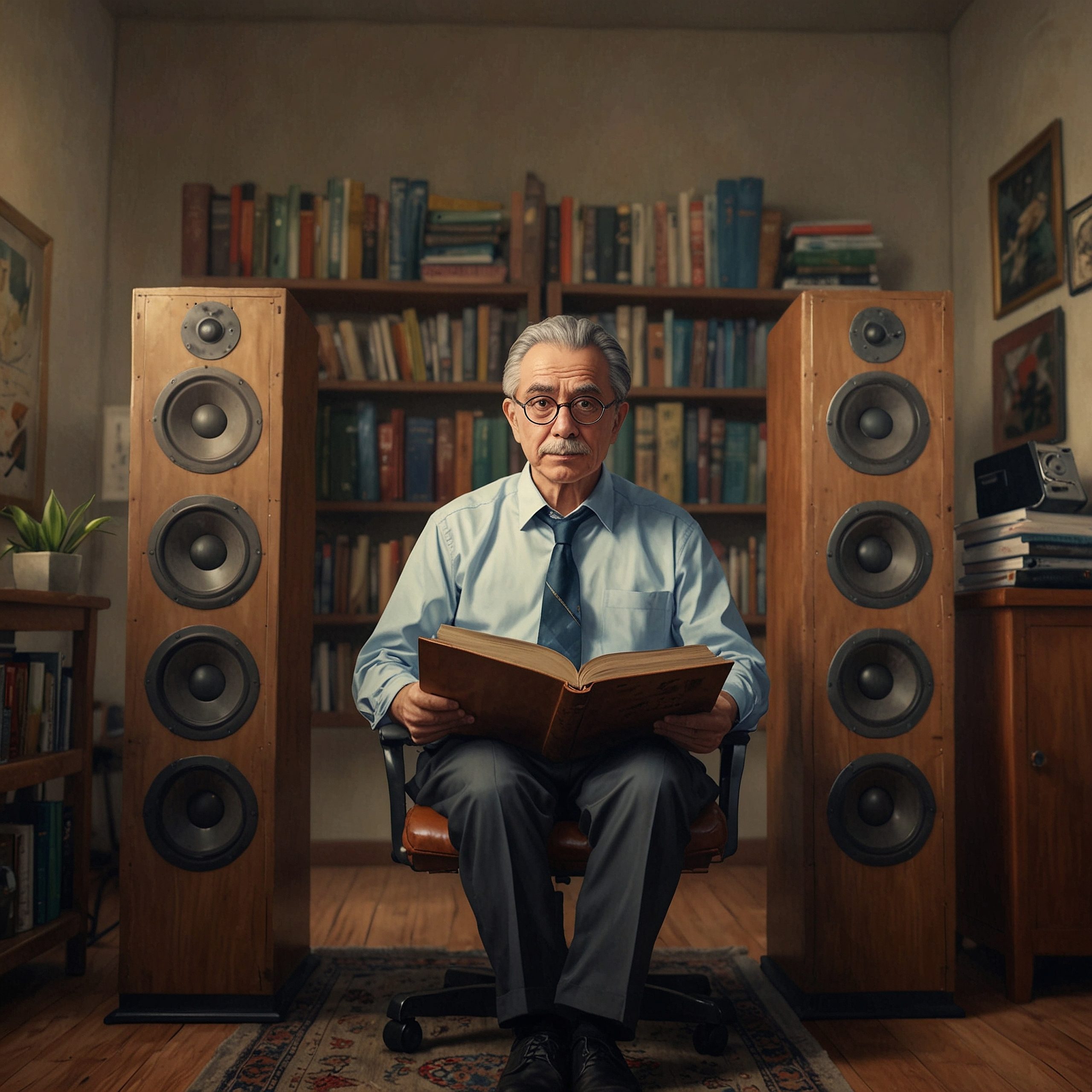
Welcome to “The ABCs of Audio: Hi-Fi Lexicon,” your ultimate guide to understanding the fundamental terms and concepts in high-fidelity audio. Whether you’re a complete beginner or looking to expand your knowledge, this article breaks down complex audio jargon into simple explanations.
We use two levels of simplicity:
- ELI5 (Explain Like I’m 5): This approach uses simple analogies and everyday language to make technical terms easy to understand.
- ELI15 (Explain Like I’m 15): This approach provides a bit more detail, suitable for those who want a deeper understanding without getting too technical.
In the following sections, we’ll cover essential product-related and technology terms, helping you build a solid foundation in Hi-Fi audio. At the end, we’ll walk through a scenario where John, a Hi-Fi novice, visits an audio store to buy a complete sound system, reinforcing the terms and concepts he’s learned.
By the end of this guide, you’ll be equipped with the knowledge to confidently explore and choose the right components for your Hi-Fi audio system. Let’s dive in!
Product-Related Terms
Speakers
- ELI5: Like your mouth, they talk out loud what the music player tells them.
- ELI15: Devices that convert electrical audio signals into sound, available in various types such as floor-standing for powerful sound, bookshelf for compact spaces, and wireless for easy placement.
Headphones
- ELI5: Tiny speakers that you wear on your ears so only you can hear the sound.
- ELI15: Personal audio listening devices, including in-ear, on-ear, and over-ear types, offering different levels of comfort and sound isolation.
Amplifiers
- ELI5: Like a megaphone, they make sounds louder.
- ELI15: Devices that increase the power of audio signals to drive speakers, ensuring clear and loud sound without distortion.
Soundbars
- ELI5: Long, thin speakers that make TV sounds clearer and louder.
- ELI15: Compact speaker systems designed to enhance TV audio, providing a simple way to improve sound quality without complex setups.
Subwoofers
- ELI5: Special speakers for making deep sounds like drum beats.
- ELI15: Speakers dedicated to reproducing low-pitched audio frequencies, adding depth and power to music and movie soundtracks.
Receivers
- ELI5: The control center for your sound system.
- ELI15: Act as the central hub of a home audio system, managing audio and video inputs and outputs, often combining functions of an amplifier and a tuner.
Pre-amplifiers (Pre-amps)
- ELI5: They boost the sound before it gets really loud.
- ELI15: Boost low-level audio signals from sources like turntables before sending them to the main amplifier, ensuring a clean and strong signal.
Power Amplifiers
- ELI5: They make the sound strong enough to be really loud.
- ELI15: Standalone units that amplify the audio signal to a level that can drive speakers, used in more complex audio setups.
Pre-Amps & Power Amps: A Closer Look
ELI5: The pre-amp starts by making the quiet sounds louder, then the power amp makes them strong enough to fill the room.
ELI15: The pre-amplifier and power amplifier work together to ensure optimal sound quality and volume. The pre-amp boosts the weak signals from audio sources, like turntables or CD players, making sure they are clear and strong. This clean, amplified signal is then sent to the power amplifier, which increases the signal strength further to drive the speakers and produce sound loud enough to fill the room.
Integrated Amplifiers
ELI5: Combines pre-amp and power amp. It’s a two-in-one that does both jobs: making quiet sounds louder and then strong enough to fill the room.
ELI15: An integrated amplifier combines both a pre-amplifier and a power amplifier in a single unit. This simplifies the setup by handling both the initial signal boosting and the final amplification, making it a convenient option for many home audio systems. While separate components allow for more customization and potentially higher sound quality, integrated amplifiers offer a balance of performance and ease of use.
Passive vs. Active Speakers
ELI5: Passive speakers need an amplifier to work, but active speakers have one built-in.
ELI15: Passive speakers require an external amplifier to drive them, meaning you need separate components for amplification. Active speakers, on the other hand, have built-in amplifiers, simplifying the setup by integrating the amplification directly into the speaker unit. This makes active speakers more convenient for some setups, while passive speakers allow for more flexibility and customization in choosing amplifiers.
Streaming Devices
- ELI5: Gadgets that let you play music from the internet.
- ELI15: Devices that access and play music from online services, integrating with home audio systems to provide high-resolution audio playback.
DACs: Digital to Analog Converter
- ELI5: Transforms computer music into real sounds you can hear.
- ELI15: Converts digital audio signals into analog signals for playback through speakers or headphones, crucial for high-quality digital music playback.
Turntables
- ELI5: Players that spin records (like big CDs with grooves) to play music.
- ELI15: Devices for playing vinyl records, involving a cartridge and stylus to read grooves on the record, with the tonearm ensuring accurate tracking.
Cartridges and Stylus
- ELI5: The needle and its holder on a record player.
- ELI15: Components of turntables that read the grooves on records, converting vibrations into electrical signals for sound playback.
Tonearms
- ELI5: The arm that holds the needle on a record player.
- ELI15: Holds the cartridge and stylus, moving across the record to ensure accurate tracking and minimal distortion.
Room Acoustics
- ELI5: How the room changes the way you hear sound.
- ELI15: The characteristics of a room that affect how sound is heard, including reflections, absorption, and diffusion. This is where acoustic panels and other treatments come into play.
What You Need
- Bare Minimum: Speakers, amplifier, source device.
- Recommended: Add a DAC, subwoofer, streaming device, and basic acoustic treatments for a more immersive and flexible setup.
Technology Terms
Analog vs. Digital
ELI5:
- Analog: It’s like drawing with a crayon straight onto paper. Your drawing is smooth and continuous, just like the original.
- Example: A vinyl record plays music using grooves that directly mimic the sound waves.
- Digital: It’s like making a drawing using a computer. Your drawing is made up of lots of tiny dots (pixels), which can make it look more precise but less smooth.
- Example: A CD stores music in binary code (1s and 0s), which is then read by a laser to produce sound.
ELI15:
- Analog: Analog signals are continuous waves that vary smoothly over time, directly representing the fluctuations in the original sound or image.
- Example: Cassette tapes store audio as magnetic signals that continuously vary to represent sound waves.
- Digital: Digital signals are discrete, represented by binary code (1s and 0s). These signals sample the original sound or image at specific intervals, which can then be stored or processed by computers.
- Example: MP3 files compress audio data into small digital files using sampling and compression algorithms.
Sample Rate
- ELI5: Imagine taking tiny pieces of a song to guess what the whole song sounds like. More pieces mean a better guess.
- ELI15: Describes how often samples of the audio signal are taken per second, measured in Hertz (Hz). Higher sample rates capture more detail, improving sound quality. Common sample rates include 44.1 kHz (CD quality), 48 kHz (used in professional audio), and higher rates like 96 kHz or 192 kHz for high-resolution audio.
Bit Depth
- ELI5: How many crayons you have to color a picture; more crayons mean a more colorful picture.
- ELI15: Refers to the number of bits used to represent each audio sample, affecting dynamic range and sound resolution.
Equalizer
- ELI5: Like sliders on a light board, letting you turn up or down different types of sounds.
- ELI15: Adjusts the balance of different frequency components in an audio signal, enhancing or reducing specific ranges like bass or treble.
DSP (Digital Signal Processing)
- ELI5: Computers fixing and changing sounds to make them better.
- ELI15: Manipulation of digital audio signals to improve reliability, accuracy, or efficiency, widely used in modern audio equipment and software.
Latency
- ELI5: The wait time between when you ask someone a question and when they answer.
- ELI15: The delay between an audio input being processed and its output, critical in live sound and recording to ensure synchronization.
Codec
- ELI5: Helps music shrink so it fits better through the internet without losing much quality.
- ELI15: Technology for encoding or decoding a digital data stream or signal, balancing sound quality and file size (e.g., MP3, AAC).
Bluetooth
- ELI5: Wireless technology for streaming audio from devices like phones and tablets.
- ELI15: A standard for short-range wireless interconnection of electronic devices, facilitating streaming of audio without cables.
Hi-Res Audio
- ELI5: Really good sound quality music files.
- ELI15: High-resolution audio files that provide better sound quality than standard formats due to higher sample rates and bit depths.
Surround Sound
- ELI5: Sound that comes from all around you, like in a movie theater.
- ELI15: An audio system that uses multiple speakers placed around a room to create an immersive listening experience.
Frequency Response
- ELI5: How well a speaker or headphone can make high and low sounds.
- ELI15: The range of frequencies a speaker or headphone can reproduce, typically measured in Hertz (Hz).
Watts (W)
- ELI5: Shows how loud a speaker or amplifier can get.
- ELI15: A measure of power indicating the maximum output capacity of a speaker or amplifier.
Ohms (Ω)
- ELI5: How hard it is for electricity to flow through speakers or amplifiers.
- ELI15: A measure of electrical resistance, important for matching speakers and amplifiers to ensure compatibility and optimal performance.
Hertz (Hz)
- ELI5: How high or low the pitch of a sound is.
- ELI15: A unit of frequency representing the number of cycles per second, used to measure sound frequencies.
SPL (Sound Pressure Level)
- ELI5: How loud the sound is.
- ELI15: A measure of loudness, with higher SPL indicating louder sound, measured in decibels (dB).
Sound Quality Terms
Soundstage
- ELI5: It’s like the space where all the sounds and instruments in a song seem to come from different directions, making you feel like you’re in the middle of a live performance.
- ELI15: The perceived three-dimensional space created by a stereo or surround sound system, where different audio elements appear to come from specific directions and distances. A good soundstage gives a sense of depth, width, and height to the audio, enhancing the listening experience by making it feel more realistic and immersive.
Timbre
- ELI5: What makes a piano sound different from a guitar when they play the same note.
- ELI15: The characteristic quality of a sound that distinguishes different types of sound production.
Noise Floor
- ELI5: The background noise that you hear when no one is talking or playing music.
- ELI15: The level of background noise in a recording or an audio device.
Headroom
- ELI5: Keeping some quiet space in a recording to make sure it doesn’t sound too stuffed or distorted.
- ELI15: The amount of available dynamic range above the average level of an audio signal to prevent clipping.
Distortion
- ELI5: When music sounds fuzzy or messy because it’s too loud.
- ELI15: Unwanted changes to the original audio signal, often due to over-amplification.
Fidelity
- ELI5: How close the music you hear from speakers or headphones sounds to real live music.
- ELI15: The degree to which a copy of sound is exact to the original source.
Clipping
- ELI5: When the sound gets cut off because it’s too loud.
- ELI15: Distortion that occurs when an amplifier is overdriven and tries to deliver a signal beyond its maximum capability.
Dynamic Range
- ELI5: The difference between the quietest and loudest parts of a sound.
- ELI15: The range between the softest and loudest sounds in an audio recording.
Recording Terms (this is not as important for a casual listener)
Multi-track Recording
- ELI5: Recording different sounds separately so you can mix them together later.
- ELI15: Capturing different instruments or vocals on separate tracks for individual manipulation during mixing.
Overdubbing
- ELI5: Recording your voice over another recording.
- ELI15: Adding additional recordings on top of an existing track to enrich the sound.
Gain
- ELI5: Turning up the volume when recording so you capture all the details.
- ELI15: Adjusts the input level of an audio signal, ensuring it is neither too weak nor too strong.
Compression
- ELI5: Making loud and quiet sounds closer in volume so everything can be heard easily.
- ELI15: Reduces the dynamic range of an audio signal, balancing the volume of quiet and loud sounds for a more consistent output.
Reverb
- ELI5: Echoes added to make it sound like you’re in a big room or hall.
- ELI15: Simulates the sound reflections in a physical space, adding depth and ambiance to recordings.
Limiting
- ELI5: Stopping sounds from getting too loud, like telling someone not to shout.
- ELI15: Prevents audio signals from exceeding a certain level, avoiding distortion and protecting equipment.
Phantom Power
- ELI5: Electricity that powers special microphones.
- ELI15: Supplies power to condenser microphones through XLR cables, enabling them to operate without separate power supplies.
DAW (Digital Audio Workstation)
- ELI5: Computer program used to make and edit music.
- ELI15: Software used for recording, editing, and producing audio files on a computer.
Patch Bay
- ELI5: A board with lots of holes to plug in and connect different sound equipment.
- ELI15: A panel that allows easy connection and rerouting of audio signals in a studio environment.
Monitor Speakers
- ELI5: Special speakers used to check how recordings really sound.
- ELI15: Speakers used in recording studios for accurate sound reproduction during mixing and mastering.
Sibilance
- ELI5: Hissing sounds that can be annoying when listening to speech or singing.
- ELI15: High-frequency hissing noises typically associated with the letter “s” that can be harsh in recordings.
Honorable Mentions
THD (Total Harmonic Distortion)
- ELI5: Measures how messy the music gets when played through speakers.
- ELI15: Quantifies the harmonic distortion introduced by audio equipment, affecting sound clarity.
Impedance
- ELI5: How easy it is for electricity to flow through speakers or headphones.
- ELI15: The resistance an audio device presents to an alternating current, important for matching components like speakers and amplifiers.
Phase
- ELI5: When musicians are perfectly in time, it sounds good; if not, it sounds off.
- ELI15: The timing relationship between audio signals, with phase alignment crucial for coherent sound.
Crossover
- ELI5: Tells which part of the music should come out of which speaker.
- ELI15: An electronic circuit that assigns the appropriate frequency range to different speakers or drivers.
Crossfeed
- ELI5: Makes headphones sound more like listening to speakers in a room.
- ELI15: Simulates the effect of listening to speakers when using headphones, by blending the left and right channels slightly.
Binaural Recording
- ELI5: Makes you feel like you are in the place where the sound was recorded.
- ELI15: A method of recording sound that uses two microphones to create a 3D stereo sound sensation for the listener.
Scenario: A Client Buys a Hi-Fi Audio System
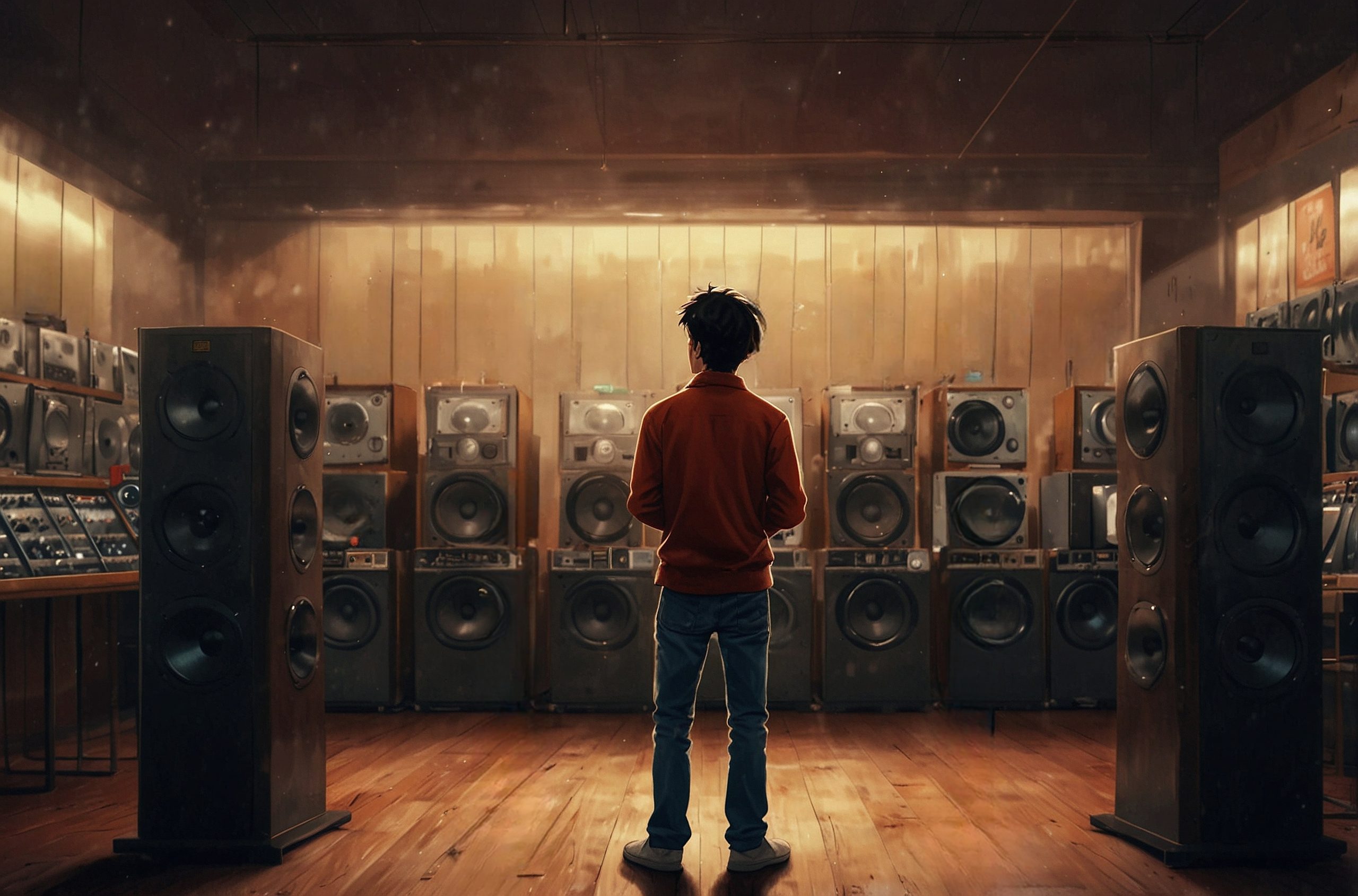
John walks into a Hi-Fi store, determined to build the perfect sound system for his living room. He has always loved music, but this is his first time venturing into the world of high-fidelity audio.
As he browses the store, he first encounters the speakers section. Sarah, a knowledgeable salesperson, approaches and begins explaining the essentials. John learns that speakers are the heart of any audio system, converting electrical signals into sound. Sarah shows him a variety of options:
Floor-standing speakers, which provide powerful, room-filling sound and are ideal for larger spaces. John likes their robust performance but worries they might be too imposing for his medium-sized living room.
Bookshelf speakers, more compact yet still capable of delivering excellent quality sound. They can easily fit on shelves or stands, making them a good balance between size and performance.
Wireless speakers, offering convenience and flexibility in placement without the need for cables. John considers them but decides he prefers the more traditional, wired approach for better upgrade options in the future.
Given his medium-sized living room, John decides on the bookshelf speakers for their balance of performance and space efficiency. Next, Sarah guides John to the subwoofers. She explains that subwoofers are special speakers designed to handle low-frequency sounds, enhancing the depth and richness of the audio. John realizes that adding a subwoofer will significantly improve his listening experience, particularly for music and home theater setups, so he chooses a subwoofer that complements his bookshelf speakers.
Moving on to source components, John faces several choices:
Turntables: Sarah explains the appeal of turntables for vinyl enthusiasts, providing a warm, analog listening experience cherished by many audiophiles. John, who just inherited a vinyl collection, is drawn to this option. She points out the importance of a good cartridge and stylus for sound quality. The cartridge houses the stylus (or needle) that reads the grooves on the vinyl record, converting these vibrations into an electrical signal. A quality tonearm, which holds the cartridge and moves across the record, ensures accurate tracking and minimal distortion.
CD Players: Sarah describes CD players as offering excellent digital sound quality and a huge library of readily available music. John likes the idea but is concerned about the future of physical media.
Streaming Devices: These offer the convenience of accessing a vast array of music from online services. Sarah demonstrates how a streaming device can integrate with his system to play high-resolution audio files. Streaming devices use internet connectivity to provide instant access to millions of songs, often with higher quality than traditional radio.
John decides to start with a turntable to enjoy his vinyl collection. He realizes that streaming devices can generally include a built-in DAC (Digital to Analog Converter), which converts digital audio signals into analog signals that can be played directly through stereo systems, powered speakers or headphones, crucial for high-quality digital music playback. Although he won’t opt for a DAC just yet, he plans to revisit the idea in the future for enhanced digital audio experiences.
John understands that amplifiers boost the audio signal to drive the speakers, ensuring clear and loud sound without distortion. Sarah explains the difference between integrated amplifiers, which combine a pre-amplifier and power amplifier in one unit, and separate components. She clarifies that a pre-amplifier processes the audio signal from various sources, enhancing it to a level suitable for further amplification, while a power amplifier takes this processed signal and boosts it to a level that can drive the speakers.
If John were setting up a purely audio system, he might opt for a well-reviewed integrated amplifier that suits his needs, simplifying his setup while providing high-quality sound. Integrated amplifiers are popular because they save space and reduce the complexity of setting up multiple devices.
However, for a more comprehensive setup, Sarah suggests considering a receiver. Receivers act as the central hub of a home audio and video system, combining the functions of an integrated amplifier, a tuner and often a DAC while managing audio and video inputs. They are especially useful for audio and video setups as they can route audio from your TV to your speakers, allowing John to listen to his favorite series and movies through his speakers.
John realizes the value of a receiver in simplifying his setup, providing both audio amplification and video management in one unit, so he adds a well-reviewed receiver to his cart.
Sarah helps John consider some components he might not need:
- Soundbars: John doesn’t need a soundbar because his bookshelf speakers and subwoofer will provide superior sound quality and depth compared to most soundbars, which are designed more for convenience and compactness.
- Wireless speakers: John decides against these since he prefers to keep the option open to upgrade his wired speakers in the future.
- CD players: John passes on a CD player because he is more interested in vinyl and digital streaming.
Sarah also suggests considering some future upgrades to enhance his audio setup over time:
- Room Acoustics: Before finalizing his purchase, Sarah advises John to consider the acoustics of his living room. She explains that adding a few acoustic panels can reduce unwanted echoes and significantly improve overall sound clarity, often making the most noticeable difference in a listening experience. Proper room acoustics can transform the sound quality, ensuring that the audio system performs at its best. This upgrade is frequently one of the most impactful improvements one can make in a home audio setup.
- High-Quality Speaker Cables and Interconnects: She explains that while cables might seem like a minor detail, they can significantly impact the overall sound quality. However, she notes that the debate over the benefits of high-end cables can be controversial. It’s generally advised not to overspend, as there is a limit to how much difference cables can make on an entry level system.
- Power Conditioner: Sarah recommends a power conditioner to protect his new equipment from power surges and to provide a clean power supply. This can enhance the performance and longevity of his audio components.
With a clear understanding of these essential components and future upgrade possibilities, John feels confident in his choices. He leaves the store with a well-rounded setup, including bookshelf speakers, a subwoofer, a turntable, and a receiver. John is excited to set up his new Hi-Fi audio system, knowing he has made informed decisions to achieve the best possible listening experience. He will probably come back to buy separate amps for even better sound quality and more customization options in the future.
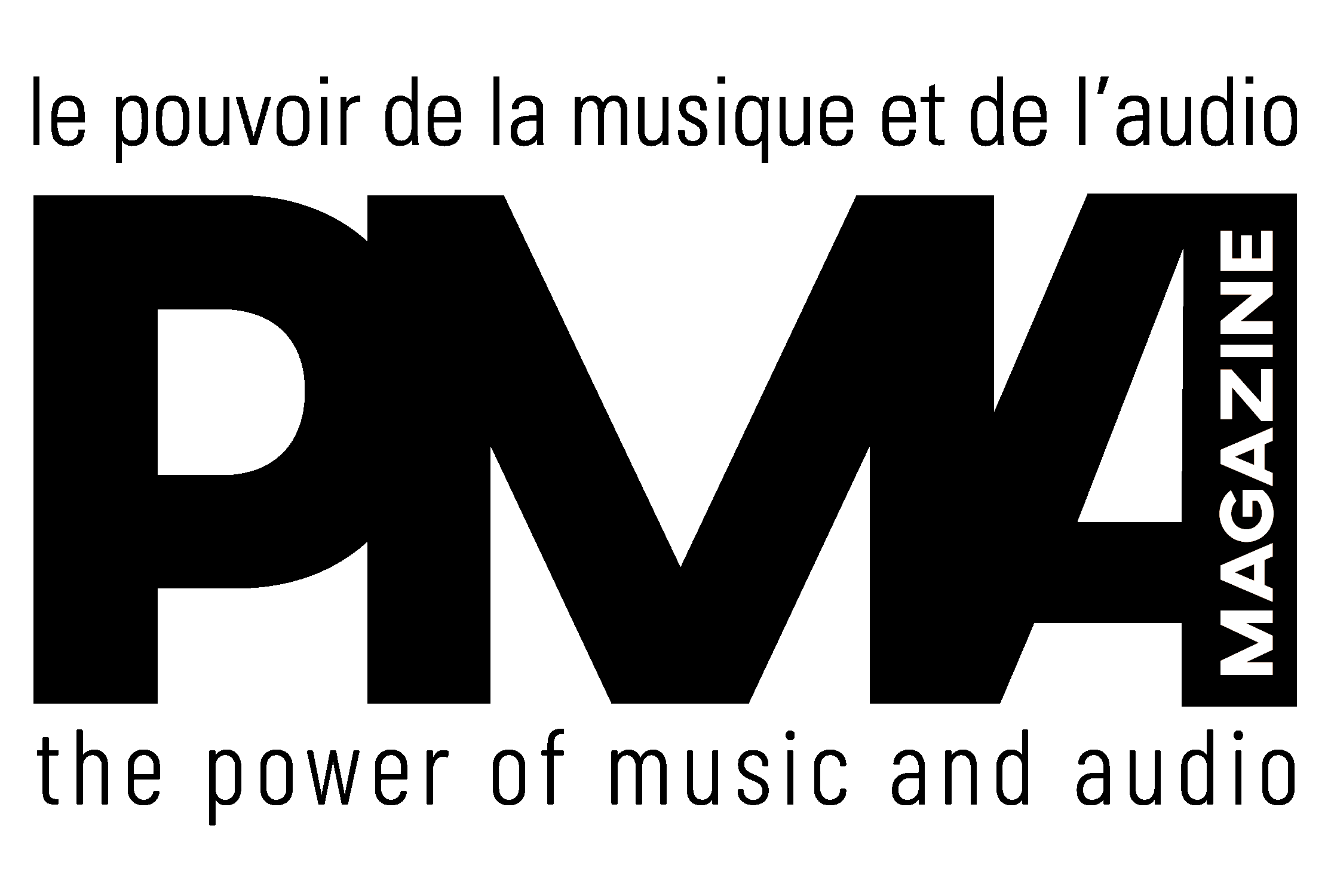



















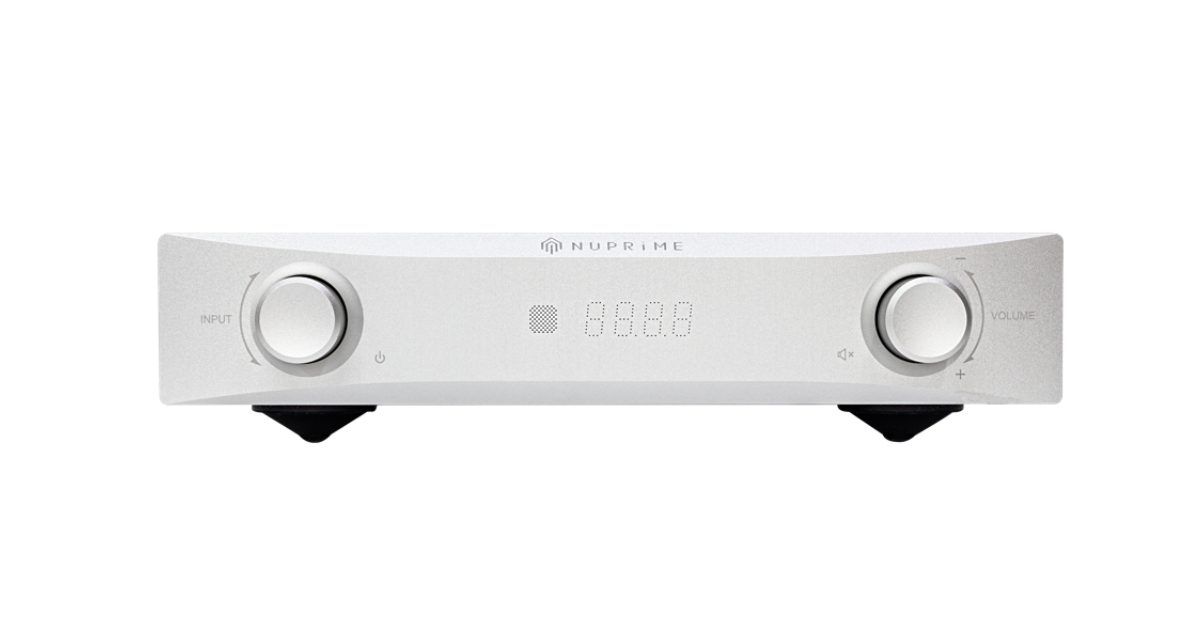
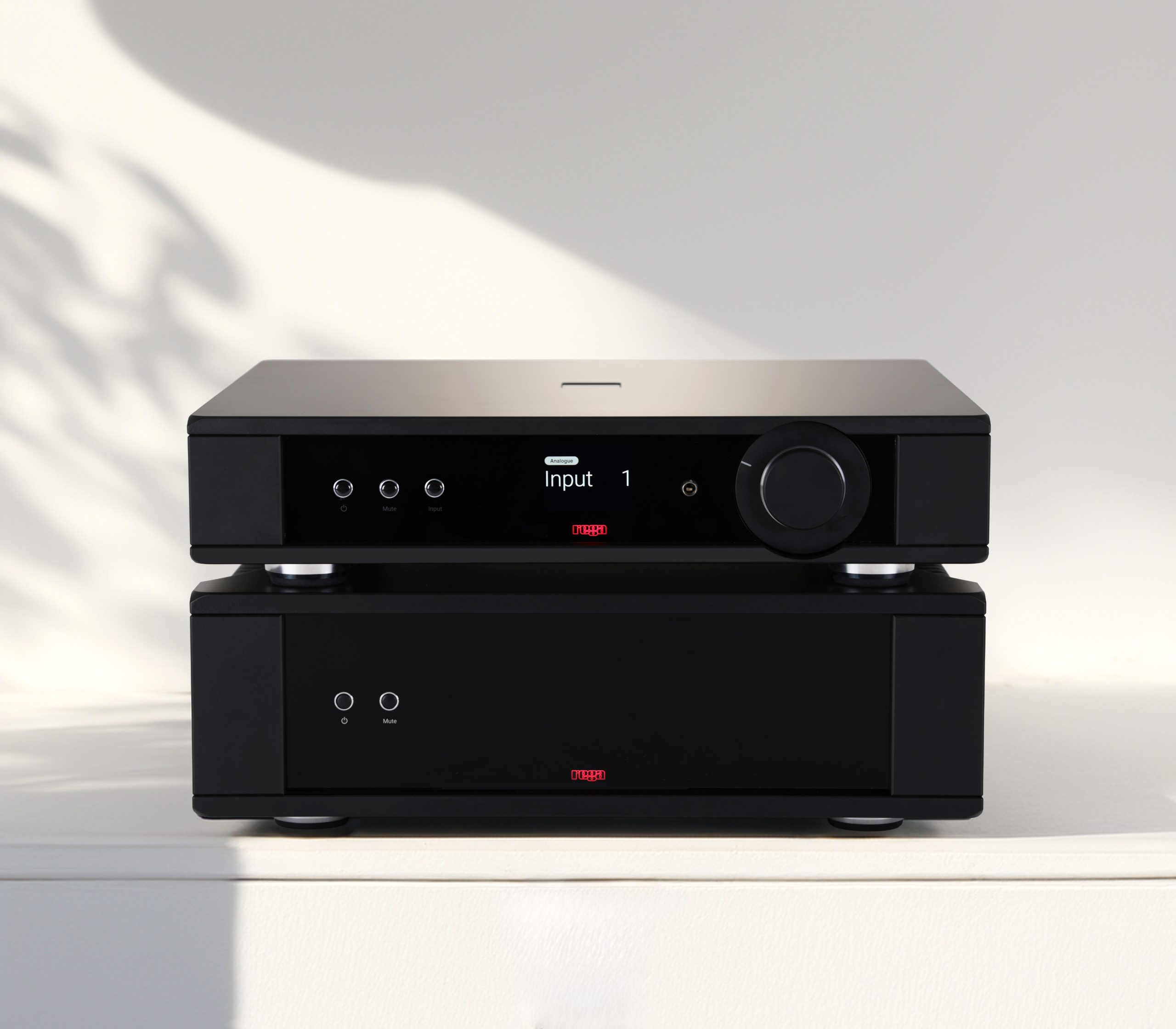
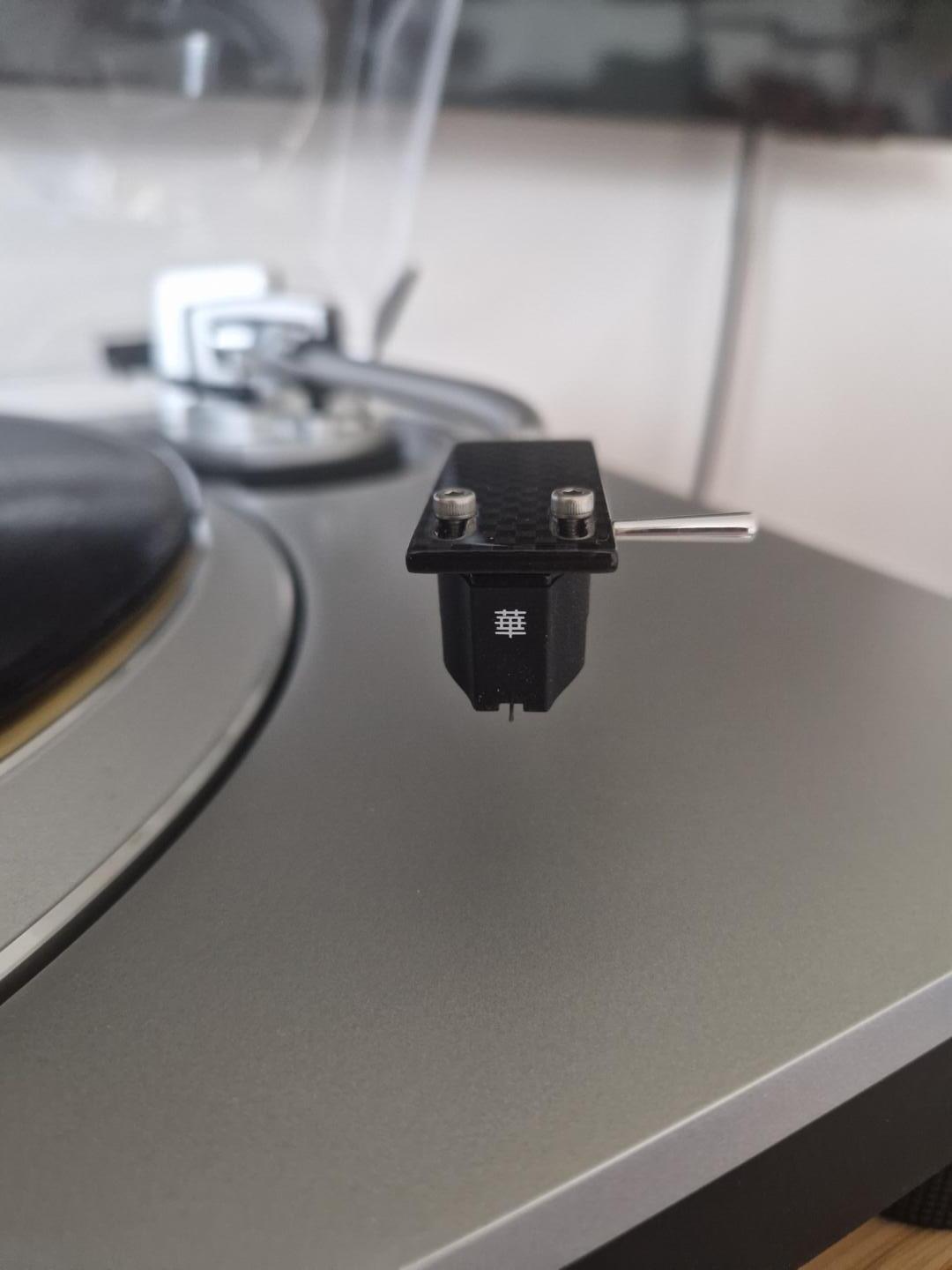
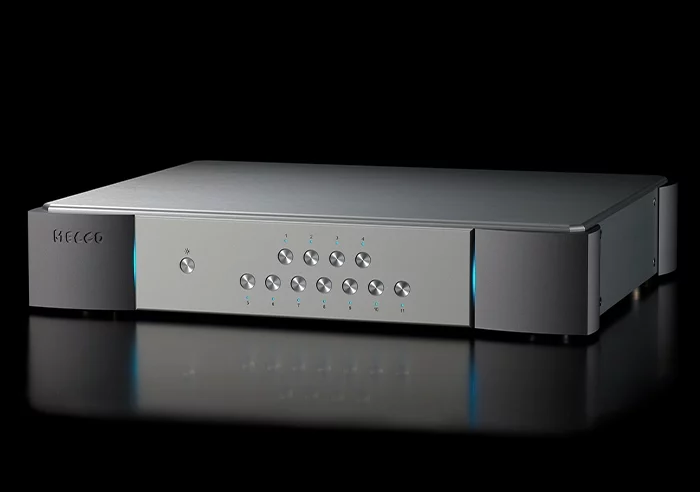
Leave a Reply